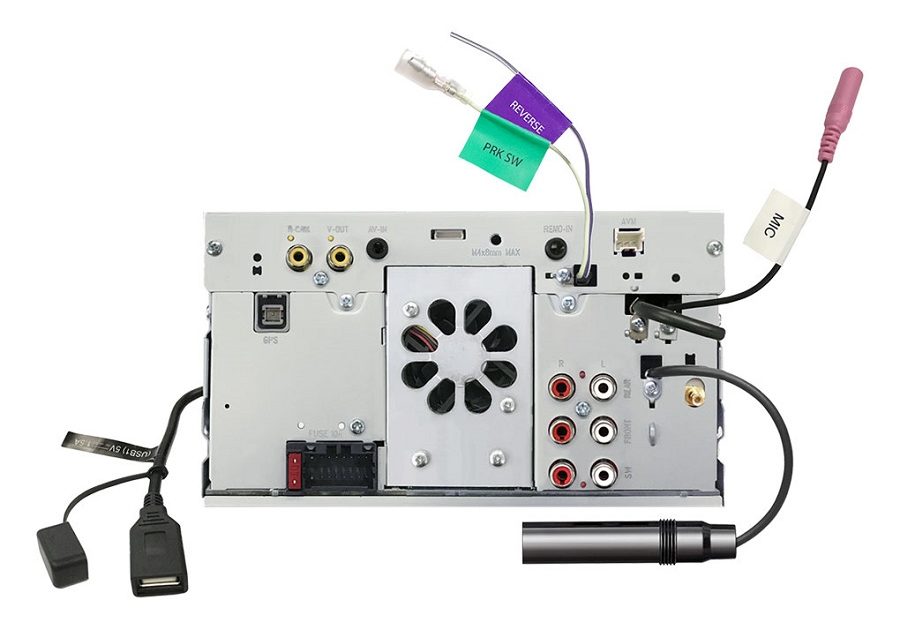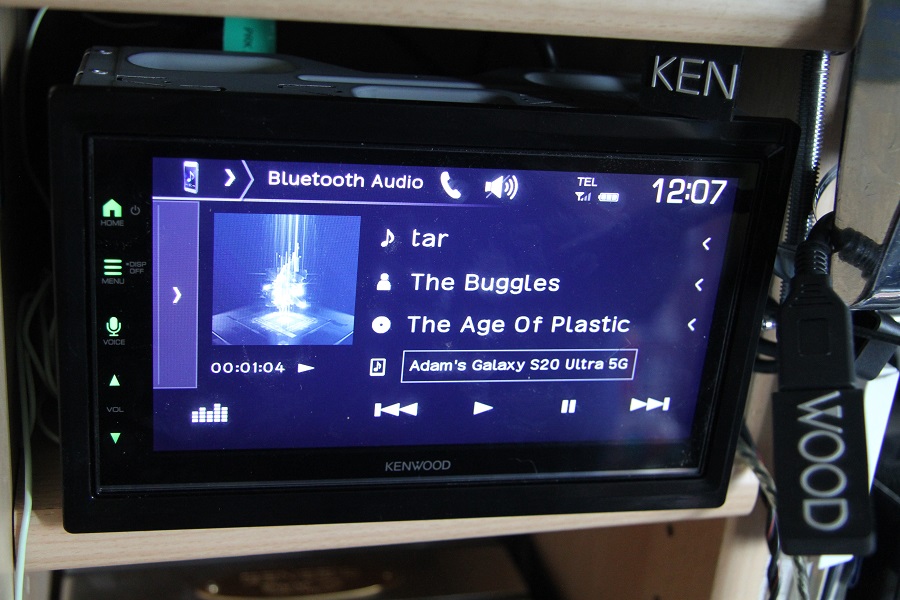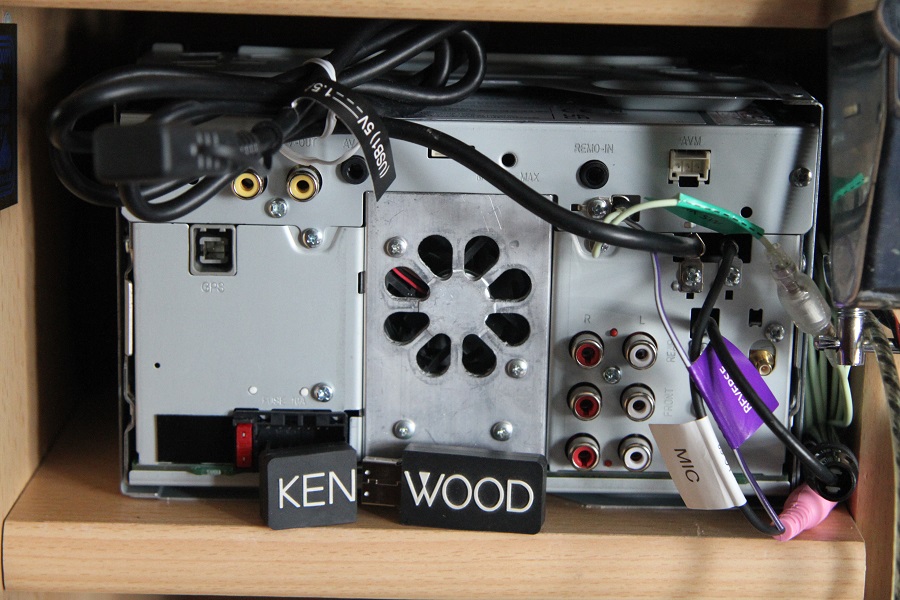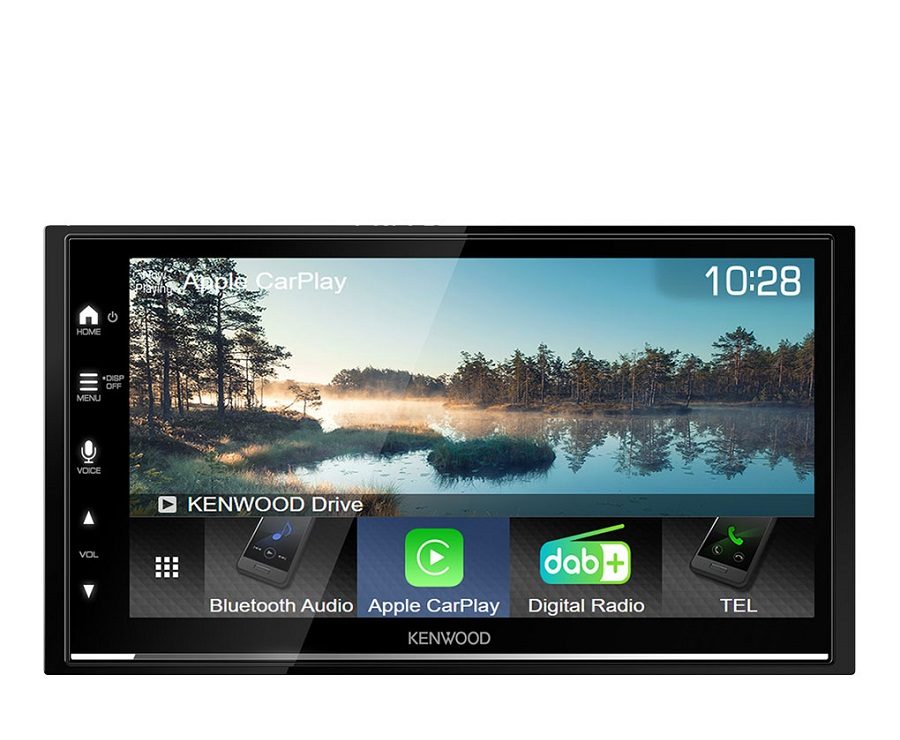Looking for a new car stereo/head unit? See what we made of the Kenwood DMX7722DABS to decide if it might be the one for you.
If you are here reading this, then you care about your choices in technology. Right now, you’ve found this lovely double-DIN Kenwood car stereo and may even be thinking about replacing another unit. I can tell you that those who make and market technology, label us all. There are the cost-no-object and early-adopter buyers who want the best or newest, no matter what it costs. Then, there are the rock-bottom, entry-level buyers whose interest level is only about what’s the cheapest. And the rest of us hum and haw and read reviews. Clever buyers get the best value for money. Normally, the cleverest purchase is at the just-a-bit-down-from-top level. This is due to two technology forces coming into play. One is the filtering-down effect, the other is pure marketing.
Filtering-down is when a technology intended for something top-end gets incorporated in less state-of-the-art kit. The classic example is ABS braking. And get this, it wasn’t Formula One that developed it. Antilock Braking Systems were first developed for the brakes on a plane called Concorde, you might have heard of it. Now most cars have them.
The marketing thing is when the designers have a whole bucket of features and benefits and have a price on each one. If they get it right, then they will have a product for each sector, with added fun and technology at each level to encourage you to go for the next one up. Likewise, there are features that only top end buyers will want, so distributing the technology is key.
The Kenwood DMX7722DABS is a totally mint example of the clever purchase. You get pretty much everything from the totally mad-end devices but save a whopping third of the price by not having stuff you might not need.

Kenwood DMX7722DABS Features
The touch screen measures 6.75in on the diagonal, 6.8in for the blurb. A small compromise in size versus the 7in screen on the DMX8021DBS. You get the same ability to connect two smartphones and the (Hi Res) audio whistles and bells are epic. You get the same 13 band equalizer with all sorts of smart stuff. For instance, if you move one EQ fader, the adjacent ones will move to create smoother curves. You can choose from either EQ presets, or user memories to put your own curves in when setting up your audio.
There are three sets of pre-outs that you can set as two-way or even three-way active outputs. The truly hench dual band (2.4GHz/5GHz) Wifi that holds onto your signal like a home one, is there too. Plus, it has the full-fat 4x50W chip amp inside – you might expect a saving there, but no, it’s muscular. That cunning rear camera yellow RCA input can also do the reverse-cam guidelines overlay. Just like an OEM one, you get graphic lines showing up on your screen when you select reverse.
Some steering wheel remote controls are also controllable via a small loom. There’s a full A/V 3.5mm input socket on the back, like the Red/White/Yellow cluster of RCAs on a cord that go to a tip-ring-ring-sleeve plug. This is one step better than just left and right audio with a ground. It takes composite video, as well as the regular yellow RCA video input.
The Kenwood DMX7722DABS look every bit as brilliant as the one that costs half as much again on top. So, what does it really have less of?

Where are the costs cut?
Android Auto and Apple Car Play are available wirelessly and the screen mirroring is cool with a USB connection. The USB itself is an older 1.5A capable type-A, though. That’s one saving, as opposed to it being a type C with 3.0A charging. I find 1.5A plenty in the car, for a phone.
The Fr/Rr/Sub audio RCAs output at 2.5V which is just half the mad 5.0V of the 8021. But unless you are building a very serious system, you won’t find any difference. It’s a crazy audiophile trend that took the 500mV standard signal and kept raising it. The 4.0V level used to be the utter best, so 2.5V is pretty darn clear. The idea is the more potent the RCA signal, the less likelihood of any audible noise in the system.
You won’t find any of the pretty picture stuff that the JVCKW-M875DBW has and you have only one dedicated rear camera input. You could use the A/V 3.5mm input for a camera if you wished. But that’s ‘only’ two, not four.
The loom to connect the unit to the car is less busy and its cover hides a fuse that is now 10A instead of 15A. So, the whole radio is less power hungry on its own. The things you don’t get are few and carefully chosen to offer you the most for your money. You can still use the optional IR remote control (KNA-RCDV340) meaning a whole infra-red eye and control system is quietly tucked in there too.

Ease of Installation
It’s a delight for installers because it has a bit less belly fat within. This double-DIN radio (both FM and DAB+) is only 75mm deep. So, it will fit into dashboards designed for OEM double-DIN screens, without much space behind them. And that’s increasingly vital in a world where a true ‘double-DIN’ bit of cubic capacity in your dash is becoming rarer.
An absolute powerhouse and terrific value for money, the Kenwood DMX7722DABS (£429.00) is another unit packed full of features at a fantastic price point. The unit is available now from Kenwood Pro Install Centres and online retailers such as Amazon.
Check price comparisons for your region below:
Specs
- Shallow-Chassis Double DIN mech-free with 6.75in WVGA capacitive touch screen, wireless Android Auto and Apple Car Play
- Onboard Power: 4x50W @4ohms
- Front/Rear/Sub RCA outputs at 2.5V, One RCA camera input and RCA video out, rear USB-A on cord, 3.5mm A/V input
- Reads MP3, WMA, WAV, AAC and FLAC audio files. Plays JPEG/BMP/PNG images and WMV, mkv and MPEG 1/2 /4 and H.264 video
How we tested the Kenwood DMX7722DABS
The folks at Kenwood were kind enough to send us an example of the DMX7722DABS to try out first-hand.





